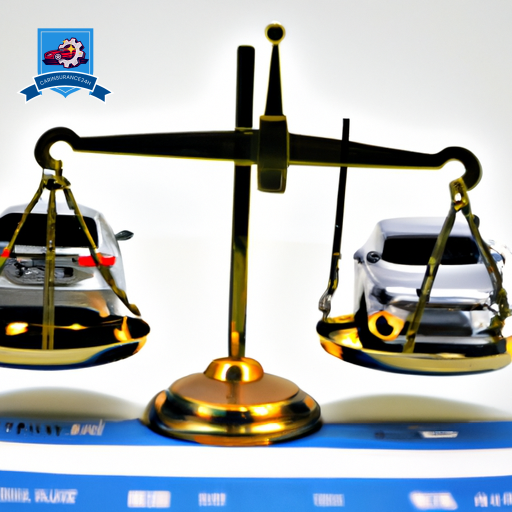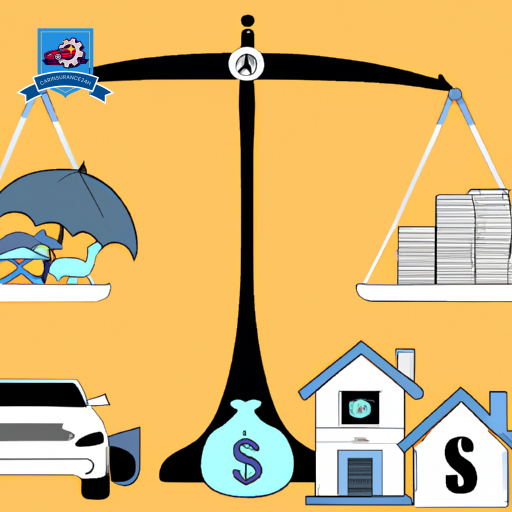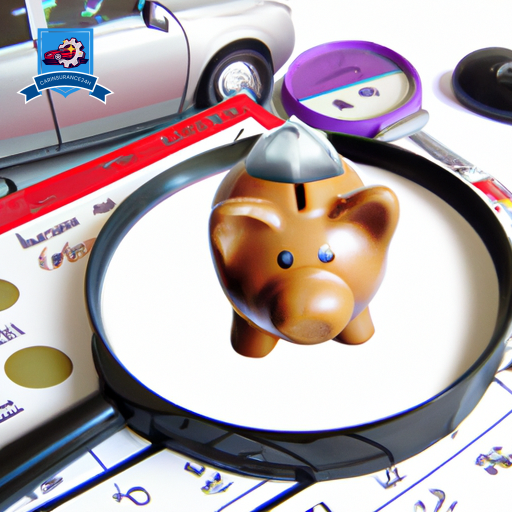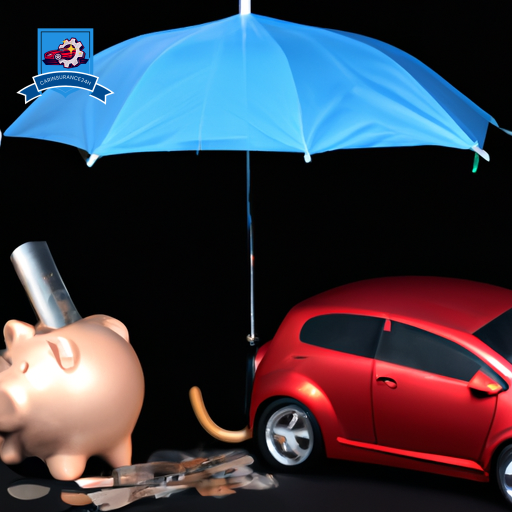Selecting the appropriate deductible amount for your car insurance is a critical decision that warrants careful consideration. It involves understanding the basics of how deductibles work, evaluating your current financial situation, and evaluating the implications of various deductible levels on your insurance premiums.
A higher deductible could mean lower premiums, but it also requires that you have sufficient funds on hand to cover the higher out-of-pocket costs in the event of a claim. Conversely, a lower deductible reduces the amount you’ll need to pay upfront but typically results in higher monthly premiums.
Balancing these factors is vital, and further exploration will reveal strategies to optimize your deductible amount in alignment with your financial stability and risk tolerance.
Understand Deductible Basics

A deductible is a specific monetary amount that a policyholder is required to pay out-of-pocket before their insurance coverage begins to cover the cost of a claim. Understanding the deductible definition is critical for anyone purchasing car insurance since it directly impacts the claim process and, consequently, financial responsibility in the event of an accident or damage to the vehicle. Deductibles typically vary depending on the policy and the insurance company, providing policyholders with options to choose a deductible amount that suits their financial situation and risk tolerance.
The role of the deductible in the claim process cannot be overstated. When a claim is filed, the insurance company assesses the damage and determines the cost of repairs or replacement. The deductible amount is then subtracted from the total claim payout by the insurer. For example, if the repair costs amount to $3,000 and the deductible is $500, the insurance company would cover $2,500, while the policyholder pays the remaining $500. It’s a fundamental aspect of most insurance policies designed to prevent minor claims and encourage responsible ownership and use of the insured asset.
Choosing the right deductible is a balancing act between monthly premium costs and out-of-pocket expenses in case of a claim. A higher deductible generally lowers the premium, but it means more out-of-pocket expenses during a claim. Conversely, a lower deductible results in a higher premium but reduces the financial burden when filing a claim. Understanding these basics is the first step in making an informed decision when selecting a car insurance deductible amount.
Assess Your Financial Situation

Before selecting a car insurance deductible amount, it is important to evaluate your financial standing.
This involves examining your savings reserves to make sure you can afford the deductible in case of a claim, as well as understanding the impact of various deductible options on your monthly budget.
A thorough assessment helps in making an informed decision that aligns with your financial capabilities and needs.
Evaluate Savings Reserves
Evaluating your savings reserves is a critical first step in determining the appropriate deductible amount for your car insurance policy. This process involves a thorough evaluation of your financial health, particularly how much money you have set aside for emergencies. Your savings not only reflect your ability to pay a higher deductible in the event of a claim but also indicate your financial planning acumen, including your approach to investment strategies and understanding of tax implications.
When appraising your savings reserves, consider:
- The total amount saved: This indicates your financial cushion.
- Accessibility of funds: How quickly you can access your savings in case of an auto incident.
- Impact on future financial goals: Make sure that using your savings for a deductible won’t derail your long-term plans.
Monthly Budget Impact
Understanding the impact on your monthly budget is essential when selecting an appropriate car insurance deductible amount.
It’s important to think not only about your regular expenses but also the potential for income fluctuations that could affect your financial stability. A higher deductible might lower your monthly insurance premiums, but it requires a careful assessment of whether you can consistently afford it, especially in months where your income might dip.
Additionally, evaluate your discretionary spending, such as entertainment expenses, to determine if adjustments can be made to accommodate a higher deductible.
This balanced approach guarantees that your decision supports your overall financial health, allowing for both necessary expenditures and the enjoyment of leisure activities without overextending your budget.
Consider Your Driving History

Taking into account your driving history is an important step in determining the appropriate car insurance deductible for you. Your past experiences on the road can provide valuable insights into the level of risk you might pose and, by extension, the most suitable deductible amount. Reflecting on your driving history helps you gauge your propensity for accidents, which is vital in making an informed decision.
When considering your driving history, focus on the following factors:
-
Traffic Patterns: Familiarize yourself with the traffic patterns of areas you frequently drive in. High-traffic zones increase the likelihood of accidents, suggesting a lower deductible might be more beneficial to reduce out-of-pocket expenses in the event of a collision.
-
Weather Conditions: Assess how weather conditions in your area could affect your driving. Regions prone to severe weather, such as heavy rain, snow, or ice, can lead to a higher risk of accidents. A lower deductible might be advisable to mitigate financial strain from weather-related incidents.
-
Personal Driving Record: Examine your personal driving record for any patterns of accidents or violations. A clean driving record might justify opting for a higher deductible, as it indicates a lower risk of filing a claim. Conversely, a history of accidents or traffic violations might necessitate a lower deductible to cover potential future claims.
Understanding your driving history allows you to tailor your car insurance deductible to your specific risk profile, ensuring you’re neither overpaying for insurance nor underprepared for potential incidents.
Evaluate Your Vehicle’s Value

Evaluating the current market value of your vehicle is an important step in determining the most appropriate car insurance deductible. The market value not only reflects the depreciation or appreciation of your vehicle over time but also considers the impact of market trends and advancements in vehicle technology. These factors play a critical role in understanding how much financial protection you may need in the event of an accident or theft.
Market trends can greatly affect the value of your vehicle. For instance, certain models may become more desirable due to their reliability, fuel efficiency, or status symbol, thereby maintaining or increasing their market value. Conversely, vehicles might depreciate faster due to oversaturation in the market or the introduction of newer models with advanced features. Keeping abreast of these trends will help you gauge the current worth of your car and adjust your deductible accordingly.
Vehicle technology also influences the valuation process. Cars equipped with the latest safety features, eco-friendly engines, or innovative entertainment systems may hold their value longer than those without. This is because such technologies can reduce the risk of accidents, minimize emissions, or enhance the overall driving experience, making these vehicles more appealing in the secondary market. When evaluating your vehicle’s value, consider how these technological advancements might impact its resale price.
Understanding your vehicle’s market value, influenced by market trends and vehicle technology, enables you to make an informed decision about your car insurance deductible. This assessment ensures that your insurance coverage matches the financial investment in your vehicle, providing adequate protection without overpaying for premiums.
Factor in Risk Tolerance

Understanding one’s risk tolerance is a pivotal aspect of selecting the appropriate car insurance deductible amount. It involves evaluating personal comfort levels with potential risks and gauging one’s financial stability to handle unexpected expenses.
These factors greatly influence the decision-making process, ensuring individuals choose a deductible that aligns with their risk management preferences and financial capacity.
Assess Personal Comfort Level
When selecting a car insurance deductible amount, individuals must carefully consider their personal comfort level with risk. This involves a thorough risk evaluation to make sure that the chosen deductible aligns with their ability to handle potential financial impacts. By evaluating their tolerance for risk, policyholders can make informed decisions that balance their need for security with their financial capabilities.
To make this evaluation more structured, consider the following:
- Understanding of coverage options: Knowing the details of what your policy covers can greatly influence your comfort with risk.
- Personal financial safety net: Evaluating your financial resilience in case of an accident.
- History of claims: Reflecting on your past claims can guide your decision on deductible amounts, based on your driving habits and experiences.
Selecting a deductible is a personal decision that should align with your comfort level regarding risk and financial security.
Evaluate Financial Stability
Evaluating your financial stability is a critical step in determining your risk tolerance and selecting an appropriate car insurance deductible amount. Your financial health, influenced by investment strategies and career stability, dictates how much risk you can comfortably assume.
| Factor | High Stability | Moderate Stability | Low Stability |
|---|---|---|---|
| Investment Strategies | Diverse Portfolio | Balanced Approach | Conservative |
| Career Stability | Secure Position | Somewhat Secure | Uncertain |
| Emergency Fund | > 6 Months | 3-6 Months | < 3 Months |
| Debt-to-Income Ratio | Low | Moderate | High |
| Risk Tolerance | High | Moderate | Low |
This table illustrates how elements like investment strategies and career stability influence your financial resilience, guiding the decision on your deductible amount based on risk tolerance.
Calculate Potential Savings

To accurately calculate potential savings from different car insurance deductible amounts, one must analyze various factors including driving history, vehicle type, and financial stability. Understanding these elements is important for making an informed decision that aligns with your personal and financial circumstances. By doing so, you can make sure that you’re not only selecting a deductible that’s manageable but also one that offers the most savings over time.
When considering the potential savings associated with various deductible amounts, it’s essential to conduct a savings comparison. This involves looking at how different deductible levels affect your premium. Typically, a higher deductible leads to lower monthly premiums. However, it’s important to balance this with your ability to pay the deductible in the event of a claim.
Key factors to think about include:
- Driving history: Individuals with a clean driving record may benefit more from a higher deductible, as their likelihood of filing a claim is lower.
- Vehicle type: The value and repair costs associated with your vehicle can influence the ideal deductible amount. Higher-value vehicles might warrant a lower deductible to mitigate potential out-of-pocket expenses.
- Financial stability: Your current financial situation plays a significant role in determining your deductible. Evaluating your savings and emergency funds can help you decide how much you can afford to pay out of pocket.
It’s also important to inquire about discount eligibility with different deductible options. Some insurers offer discounts for drivers who choose higher deductibles, further enhancing potential savings. By thoroughly evaluating these factors, you can make an informed decision that maximizes your savings while ensuring adequate coverage.
Review Policy Discounts

Exploring policy discounts can greatly reduce your car insurance premiums while maintaining inclusive coverage. When selecting your car insurance deductible amount, it’s important not to overlook the various discounts insurance companies offer. These reductions can greatly decrease your out-of-pocket expenses, making your insurance more affordable without compromising on the protection it provides.
One of the primary discounts to inquire about is loyalty rewards. Insurance companies often reward customers for their continued patronage, offering reduced rates for those who have been with the company for an extended period. This can manifest as a percentage off your premium or a reduction in your deductible amount. By maintaining a policy with the same provider, you may access these loyalty rewards, leading to considerable savings over time.
Bundling options present another opportunity for discounts. Many insurers offer reduced rates when you bundle multiple policies, such as combining car insurance with homeowners or renters insurance. This not only simplifies your insurance management by having multiple policies under one provider but also can lead to substantial discounts on your premiums. It’s a strategy that benefits both the insurer, through increased business, and you, through lower costs.
When reviewing policy discounts, make sure you fully understand the eligibility criteria and how these discounts apply over time. Some may require a clean driving record, while others might be contingent on installing safety features in your vehicle. By carefully selecting your deductible amount and maximizing policy discounts, you can achieve a balance between affordable premiums and robust coverage.
Plan for Emergency Funds

Setting aside funds for emergencies is a critical component of financial planning, particularly when determining your car insurance deductible amount. Emergency preparedness involves not just having a plan in place but also making sure you have the financial resources to handle unexpected situations. Choosing a higher deductible can lower your insurance premiums, but it also means you need to have enough money saved to cover this cost before your insurance kicks in. Hence, fund allocation towards an emergency fund becomes an indispensable part of the decision-making process.
To effectively plan for emergency funds, consider the following:
-
Evaluate your financial stability: Examine your current financial situation to determine how much you can realistically set aside each month without compromising your daily needs. This assessment will help you build a fund that is substantial enough to cover higher deductibles if necessary.
-
Set a target amount: Your emergency fund should ideally cover several months of living expenses, including the amount of your car insurance deductible. This ensures that you are prepared for not just car-related incidents but also other unforeseen financial hardships.
-
Create a savings plan: Develop a strategy for gradually building your emergency fund. This may involve setting up automatic transfers to a savings account specifically designated for emergencies, cutting back on non-essential expenses, or finding additional sources of income.
Emergency preparedness through adequate fund allocation is not merely about being able to pay your deductible. It’s about making sure financial security and peace of mind in the face of unexpected events. Planning and saving diligently will stand you in good stead, providing a financial cushion that enables you to navigate emergencies with confidence.
Consult an Insurance Advisor

Consulting an insurance advisor can greatly enhance your understanding of deductible options and their impact on your financial planning. Insurance advisors are trained to demystify the complexities associated with selecting the right deductible for your car insurance policy. They can provide personalized advice based on your financial situation, driving habits, and risk tolerance. Moreover, advisors can alert you to common pitfalls such as insurance fraud and policy loopholes that could affect your coverage.
One critical area where an insurance advisor can provide invaluable insight is in the understanding of how deductibles interact with premiums and coverage limits. They can help you strike a balance, ensuring that you’re neither overpaying for insurance you don’t need nor underinsured in the event of a claim. Additionally, advisors can guide you through the process of filing a claim, helping to navigate any potential hurdles and ensuring that you understand your responsibilities and the insurer’s obligations.
Here’s a simple table to summarize the benefits of consulting an insurance advisor:
| Benefit | Description | Impact |
|---|---|---|
| Customized Advice | Tailored recommendations based on your specific needs and risk profile. | Optimized financial planning. |
| Fraud and Loophole Awareness | Insight into potential insurance fraud and policy loopholes. | Enhanced coverage security. |
| Claim Filing Assistance | Guidance through the claims process, simplifying complex procedures. | Smoother claim resolution. |
Frequently Asked Questions
How Does a Car Insurance Deductible Affect My Eligibility for Rental Car Coverage in the Event of an Accident?
A car insurance deductible influences eligibility for rental car coverage post-accident by determining the rental coverage limits and one’s financial responsibility. Higher deductibles may restrict access to or reduce the extent of rental coverage provided.
Can Changing My Deductible Impact My Insurance Premiums Retroactively, or Will the Changes Only Apply to Future Premiums?
Changing your deductible will not impact insurance premiums retroactively. Premium calculation adjustments occur upon policy modification and apply to future premiums only, reflecting the insurer’s recalculated risk based on the new deductible amount chosen.
Are There Any Tax Implications or Benefits Associated With Selecting a Higher or Lower Car Insurance Deductible?
Selecting a higher or lower car insurance deductible has no direct tax implications or benefits, as personal car insurance is not typically tax-deductible. Hence, deductible rebates or increases do not affect your tax deductions.
How Does the Deductible Amount I Choose Affect the Process and Timeline for Filing a Claim and Receiving Compensation?
Choosing a deductible for car insurance isn’t just splitting hairs; it greatly influences claim documentation and compensation speed. A higher deductible may streamline the process, potentially expediting compensation due to reduced financial liability for the insurer.
In Multi-Car Policies, Can Different Vehicles Have Varying Deductible Amounts, or Does One Deductible Apply to All Vehicles Under the Policy?
In multi-car policies, policy flexibility often allows for varying deductible amounts for different vehicles, contrary to deductible uniformity. This flexibility enables policyholders to tailor their coverage based on individual vehicle value and risk assessment.










